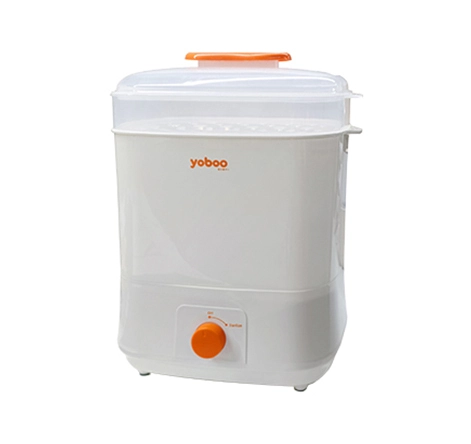Babies can suckle immediately after birth. This is a primitive reflex that does not need to be taught. Sucking soothes babies and a silicone pacifier can be used to meet their sucking needs. Research shows that using a silicone pacifier can also reduce the risk of sudden infant death syndrome (SIDS) and is recommended for certain special conditions, such as low birth weight (<1500 grams), premature babies born before 32 weeks, and hypoglycemia.
Many babies will suck their fingers if they don't have a silicone pacifier. From this point of view, a silicone pacifier is at least better than sucking fingers for two reasons: Firstly, the dental development problems caused by using a silicone pacifier are less than constantly sucking fingers; Secondly, it is relatively easy for parents to control a baby's use of a pacifier. They can simply remove the pacifier if not allowed, but controlling finger sucking is much more difficult. However, the longer a pacifier is used, the higher the probability of finger sucking in the future. Therefore, it is essential for parents to learn how to use a silicone pacifier correctly.
Precautions for using a silicone pacifier
Pay attention to hygiene: Clean the silicone soother regularly to prevent disease transmission.
Pay attention to safety: Do not attach the silicone pacifier to the baby's crib, neck, or body. This is very dangerous and may cause accidental injuries. Do not use a bottle nipple as a silicone pacifier, even if it is sucked along with the bottle. If the baby sucks the nipple forcefully, it may pull the nipple off the bottle and choke the child.
The diameter of the silicone soother base shield should be at least 3 centimeters, so that the baby does not swallow the entire silicone pacifier. Additionally, it should have ventilation holes.
A silicone pacifier should only be used after exclusive breastfeeding is fully established, usually after 3 to 4 weeks of birth. It may be used earlier if the baby is premature or hospitalized due to illness, or if the mother cannot breastfeed due to illness.
Replace the silicone soother every two months. Some parents immediately give the silicone pacifier to the baby after taking medicine, which can damage the pacifier's material. Over time, the nipple will deteriorate. Regularly check to see if the rubber has changed color or torn. Use the pacifier according to the recommended age range because older babies may sometimes suck the entire newborn silicone soother and choke on it.
When to wean off a silicone pacifier?
Starting from 6 months, consider weaning the baby off the silicone soother. Limit its use to sleep or comforting the baby, and stop using it by the age of 4 at the latest. Respect the baby's right to use the silicone soother and do not forcibly deprive or punish them for using it; the baby will be unhappy. Of course, praise and encourage the baby when they show an intention to stop using the silicone pacifier. When a child has a cold or nasal congestion, they may feel more uncomfortable without the pacifier, making it easier for them to give it up.












